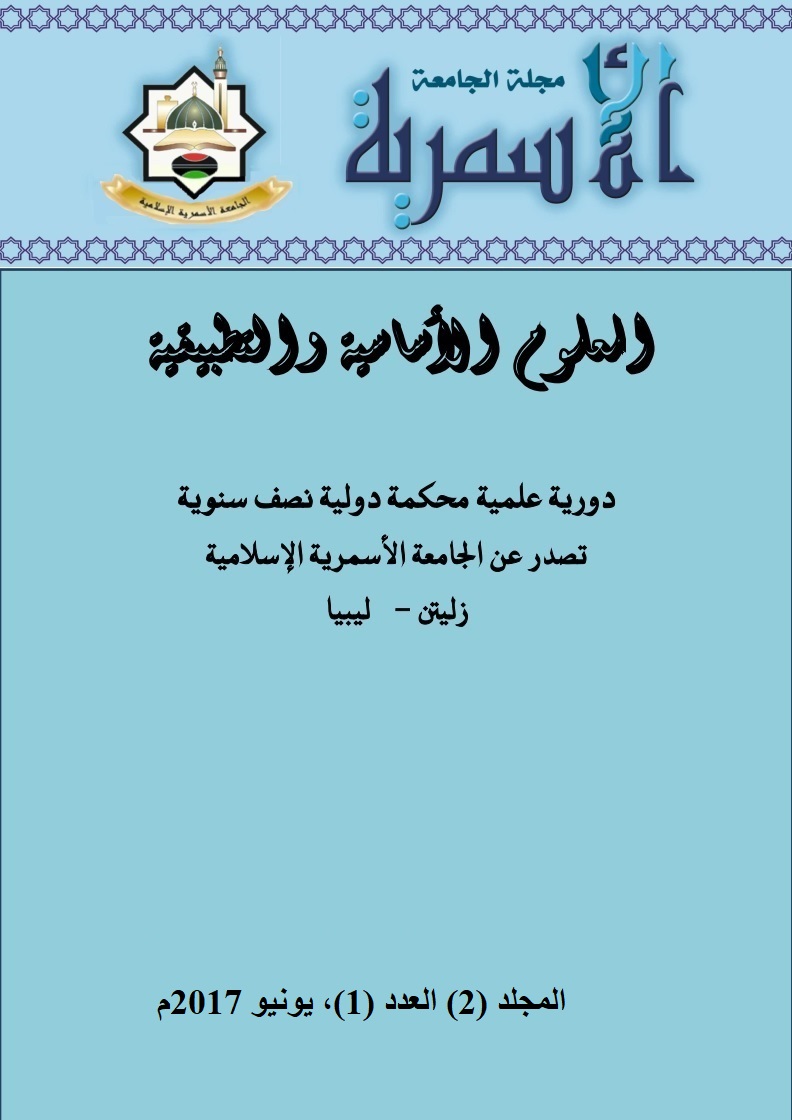لا وجود لدليل على حقيقة التقلبات الكمومية الفراغية
DOI:
https://doi.org/10.59743/aujas.v2i1.1053الكلمات المفتاحية:
فراغ، تقلبات كمية، مبدأ عدم التحديد، طاقة نقطة الصفر، ظاهرة لامب، العزم المغناطيسي الشاذ، ظاهرة كازيمرالملخص
في علم الكونيات يتم ادخال التقلبات الكمومية الفراغية كخلق وفناء أزواج الجسيمات و ضديداتها في الفراغ و كطاقة نقطة الصفر لحالة الفراغ لتفسير أصل المادة و الطاقة في الكون وتركيب الكون، و لتسهم في الثابت الكوني Λ. في كلتا الحالتين يشار لظاهرة لامب، العزم المغناطيسي الشاذ للإلكترون، و ظاهرة كازيمر كأدلة حاسمة على حقيقة التقلبات الفارغية للمجالات الكمومية. على النقيظ من ذلك تعتبر ظاهرة لامب و العزم المغناطيسي الشاذ للالكترون كنتائج لمساهمات من الرتب العليا في التفاعلات بين الجسيمات و ليس لها علاقة بالفراغ في حد ذاته. ظاهرة كازيمر أيضا يمكن صياغتها وحساب قوة كازيمر دون الرجوع لطاقة نقطة الصفر للفراغ، باعتبارها قوة كمومية نسبوية بين شحن و تيا ارت. كل الأدلة السابقة هي مظاهر ناشئة عن كينونات أخرى غير الفراغ، و بالتالي لا وجود لدليل تجريبي لحقيقة التقلبات الفراغية الكمومية. نظريا يتم تقديم التقلبات الكمومية الفارغية كنتيجة لنظرية المجال الكمية. في حين أنه لا يوجد في نظرية المجال الكمية مخططات فاينمان تصف خلق و فناء زوج من الجسيمات في الفراغ، بينما يتم التخلص من طاقة نقطة الصفر بإجراء الترتيب الطبيعي لتكون النظرية قابلة للتطبيق.
التنزيلات
المراجع
Tryon E., (1973), “Is the Universe a Vacuum Fluctuation?” Nature 246, .396
Tolman R., (1934), Relativity, Thermodynamics, and Cosmology, Oxford: Clarendon Press.
Guth A. and Tye S., (1980), "Phase Transitions and Magnetic Monopole Production in the Very Early Universe," Phys. Rev. Lett. 44, 631.
Guth A., (1982), "Fluctuations in the new inflationary universe," Phys. Rev. Lett. 49, 1110.
Hawking S., (1982), "The development of irregularities in a single bubble inflationary universe," Phys. Lett.B, 115, 295.
Starobinsky A., (1982), "Dynamics of phase transition in the new inflationary universe scenario and generation of perturbations," Phys. Lett. B. 117, 175.
Carroll S., (1992), Press W. and Turner E., “The Cosmological Constant,” Ann .Rev. Astron. Astrophys. 30, 499.
Ray C., (1990), “The Cosmological Constant: Einstein’s greatest mistake?” Stud. Hist. Philos. Sci. 21, 589.
Sahni V. and Starobinsky A., (2000), ‘The Case for a Positive Cosmological Λ-term’, Int. J. Mod. Phys.D 9, 373.
Perlmutter S. et al., (1999), “Measurements of Ω and Λ from 42 high- redshift supernovae,” Astrophys. J. 517, 565.
Riess A. et al., (1998), “Observational evidence from supernovae for an accelerating universe and a cosmological constant,” Astrophys. J. 116, .1009
Cheng T., (2010), Relativity, Gravitation and Cosmology: A Basic Introduction, Oxford University Press.
Weinberg S., (1989), “The Cosmological Constant Problem," Rev. Mod.
Phys. 61, 1.
Wheeler J., (1957), “On the Nature of Quantum Geometrodynamics," Annal. Phys. 2, 604.
Lambrecht A. and Reynaud S., (2012), “Casimir Effect: Theory and Experiments," Int. J. Mod. Phys. Conf. Series 14, 171.
Heisenberg W., “Über quantentheoretische Umdeutung kinematischer und mechanischer Beziehungen,” Z. Phys. 33, 879, (1925); English translation in: van der Waerden B., editor, Sources of Quantum Mechanics (Dover Publications, 1968)]. (English title: Quantum-Theoretical Re-interpretation of Kinematic and Mechanical Relations).
Mulliken R., (1925), “The Isotope Effect in Band Spectra, II: The Spectrum of Boron Monoxide,” Phys. Rev. 25, 259.
James R., Waller I., Hartree D., (1928), “An Investigation into the Existence of Zero-Point Energy in the Rock-Salt Lattice by an X-Ray Diffraction Method,” Proc. Roy. Soc. Lond. A 118, 334.
Pauli W., (1933), Handbuch der Physik 24, 1; english translation in: Enz C. and Mehra J. (eds.), Physical Reality and Mathematical Description, (Reidel, 1974).
Schwinger J., (1998), Particles, Sources, and Fields I, II, and III, Addison Wesley.
Milonni P., (1994), The Quantum Vacuum, Academic Press.
Casimir H., (1948), “On the attraction between two perfectly conducting
plates,” Proc.Kon. Nederl. Akad.Wetensch. 51, 793.
Milton K., (2001), The Casimir Effect. Physical Manifestations of Zero-
Point Energy, World Scientific.
Carroll S., (2001), “the cosmological Constant,” Living Rev. Rel. 4, 1.
Lifshitz E., (1956), “The Theory of Molecular Attractive Forces between
Solids,” Sov. Phys. JETP 2, 73.
Schwinger J., DeRaad L.and Milton K., (1978), “Casimir effect in
dielectrics,” Ann. Phys. 115, 1.
Bordag M., Mohideen U., and Mostepanenko V., (2001), “New developments in the Casimir effect,” Phys. Rep 353, 1.
Jaffe R., (2005), “Casimir effect and the quantum vacuum”, Phys. Rev. D .021301 ,72
التنزيلات
منشور
إصدار
القسم
الرخصة
الحقوق الفكرية (c) 2017 مجلة الجامعة الأسمرية

هذا العمل مرخص بموجب Creative Commons Attribution 4.0 International License.
تتعلق الحقوق بنشر وتوزيع البحوث المنشورة في مجلة الجامعة الأسمرية، حيث توضح للمؤلفين الذين نشروا مقالاتهم في مجلة الجامعة الأسمرية، كيفية استخدام أو توزيع مقالاتهم، والاحتفاظ بجميع حقوقهم في المصنفات المنشورة، مثل (على سبيل المثال لا الحصر) الحقوق التالية:
- حقوق الطبع والنشر وحقوق الملكية الأخرى المتعلقة بالمقال المقدم، مثل حقوق براءات الاختراع.
- استخدام البحث المنشور في مجلة الجامعة الأسمرية في الأعمال المستقبلية الخاصة بالمؤلفين، بما في ذلك المحاضرات والكتب، والحق في إعادة إنتاج المقالات لأغراضهم الخاصة، والحق في الأرشفة الذاتية لمقالاتهم.
- الحق في الدخول في مقال منفصل، أو للتوزيع غير الحصري لمقالاتهم مع الإقرار بنشره الأولي في مجلة الجامعة الأسمرية.
الحقوق الفكرية: وفق الرخصة الدولية للأعمال الإبداعية المشاعة، النسخة 4.0.
بيان الخصوصية: سيتم استخدام الأسماء وعناوين البريد الإلكتروني التي تم إدخالها في موقع مجلة الجامعة الأسمرية للأغراض المذكورة فقط والتي استخدمت من أجلها.











